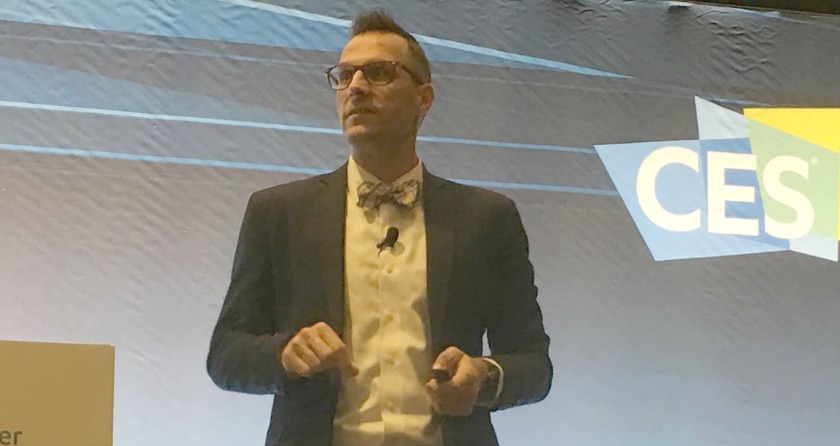HITS

CTA’s DuBravac: VR Off to Promising Start
Story Highlights
LAS VEGAS – The virtual reality (VR) market if off to a promising start, despite what some naysayers have claimed in recent weeks, Shawn DuBravac, chief economist at the Consumer Technology Association (CTA), told reporters Jan. 3 during a pre-Consumer Electronics Show (CES) presentation on technology trends and CTA’s sales forecasts for consumer technology products.
“This area is really, really new,” he said of VR and augmented reality (AR). But he said CTA expects U.S. VR headset sales to be up “close to 80%,” at 79%, reaching 2.5 million units in 2017, with revenue growing 43% to $660 million.
There were a lot of news reports at the end of 2016 that suggested VR sales had “underwhelmed” in the year, he noted. In response to that, he said: “The question I’d ask is ‘What were your expectations?’ It’s a brand new technology, and it was a technology wherein we didn’t expect hardware sales for some of the major platforms, like the Sony PlayStation VR, until the final few weeks of the year. How high did your expectations have to be for 2016 to be a failure?”
DuBravac went on to say that if one had “realistic expectations about what would happen” with the launches of VR hardware, “then, I think, you saw a market starting to take hold.”
He predicted that, at CES, one of the things we will see is “a push to get VR-capable computers below the $1,000 threshold.”
Content is important, meanwhile, and DuBravac said he heard that companies are making a “tremendous amount of investment” in a wide variety of software for VR devices. “Hardware sales will come slowly, surely,” he added, calling VR entertainment a form of “place shifting” that is following a huge trend of “time shifting” of TV/video viewing by consumers. He projected there will be many VR announcements during CES.
Other key emerging technology categories that he pointed to included artificial intelligence (AI)-driven digital assistant devices, 4K Ultra High-Def (UHD) TVs and smart home.
Digital assistant devices “present an opportunity to understand how home tech products will integrate artificial intelligence over time,” CTA said in a news release. Unit sales of voice-controlled, stand-alone digital assistant devices with a cloud-based operating system – including Amazon’s popular Echo and Google Home – are expected to reach 4.5 million units (a 52% increase over 2016) and reach $608 million in revenue (a 36% increase), CTA said.
UHD TVs represent one of the industry’s fastest-growing segments, “driven in part by next-generation technologies such as high dynamic range and wide color gamut,” it said. Growth of the 4K UHD market “significantly outpaces the transition” to HD TV, with just three years since introduction, it also said, adding cumulative sales of 4K UHD displays are forecast to hit 18.6 million units, while sales of HDTVs reached just 4.2 million units in their first three years on the market. CTA projects shipments of 4K UHD displays to reach 15.6 million units in 2017 (a 51% increase over 2016) and earn $14.6 billion in revenue (a 38% increase).
Smart Home is “evolving as consumers’ most popular means” of Internet of Things (IoT) “engagement,” CTA said. It projects that the smart home category – including smart thermostats, smart smoke and CO detectors, IP/Wi-Fi cameras, smart locks and doorbells, smart home systems, and smart switches, dimmers and outlets – will reach sales of 29 million units in 2017 (a 63% increase over 2016), earning $3.5 billion (a 57% increase).
Among categories tracked by CTA’s forecasts, U.S. sales of all connected devices are projected to reach 600 million units in 2017 – a record high total and a 5% year-over-year increase from 2016, it said.









